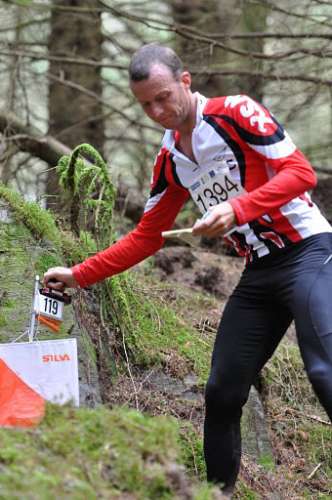Relocation and running with a plan.
Everyone who Orienteers is playing a game of concentration with themselves, and no coaching topic explores this more than the idea of relocation, this post lets look into what goes on when we lose contact with the map during competitions.

Somewhere along the current leg you’re running, the desire to travel quicker has led to you losing touch with the map, meaning losing the features that you must have been previously observing as you progressed through the previous leg. There are lots of different reasons for this to happen, but once we become aware that our surroundings no longer relate to the section of map we want to be on- it is time for action. Inexperienced and veteran Orienteers both have to at this point summon their own honesty with which to correct the situation as quickly as possible. This is one exciting part of the sport- where we have to calmly face the facts in front of us and act maturely because the alternative involves lost time for hard core competitors and epics for less serious runners. Treat it like a game and surely you will have fun. Stop running and consider what the last definite features that you saw were? You may feel to be in an area which should be correct but isn’t, it is time to relocate. Firstly and fundamentally check the map is set correctly to the ground with your compass, you may have been running in the wrong direction, having left the last control too quickly or carelessly. Did you make a 180 degree error?- Simple, but very easy to do under pressure. Did you follow another runner thinking they were on the same course as you?- Bad move. Try and find a distinct linear feature, and carefully use compass to check its direction whilst trying to identify the other features around you, if you can, go to higher ground for a better view. At this point of confusion it’s important to remain a positive outlook, for as soon as the mind starts to fixate on how difficult it seems then it will become even more difficult, I like to treat it like a game, playing matching the terrain in front of me to what’s drawn on the map. Consider the fact that you aren’t likely to have travelled that far from where you should be, and so a short time of disorientation isn’t so bad within the whole of your run. Our personal reaction is what matters and being calm and collected is the key. The worst situation is that there is nothing recognisable in a large area around you, this also probably means that you were running without a plan for some time- it is complete folly to run without having a definite intentional route between controls. If you were looking for a catching feature ahead of you has your direction changed so much you overshot? If so what are likely to be the next recognisable places you will come to? Use these to return back to your control. If you come across another control on a definite feature try and find its location, this could help you relocate.
As soon as you have matched your position to the map, set off again carefully following where you need to go, effectively start again and try to forget what is behind you as everything in front is again new. Remember on longer legs through complex terrain each leg may contain as many as ten sections that you noticed the leg breaking down into, sticking to a plan even if a little further distance is likely to serve you better than trying to wing it and then getting lost. Most of all, even when it’s really hard to match the terrain to the map, slow down and have the attitude that it’s all good! I look forward to seeing you at our upcoming sessions this season, See full details on http://www.wessex-oc.org/
Jason
